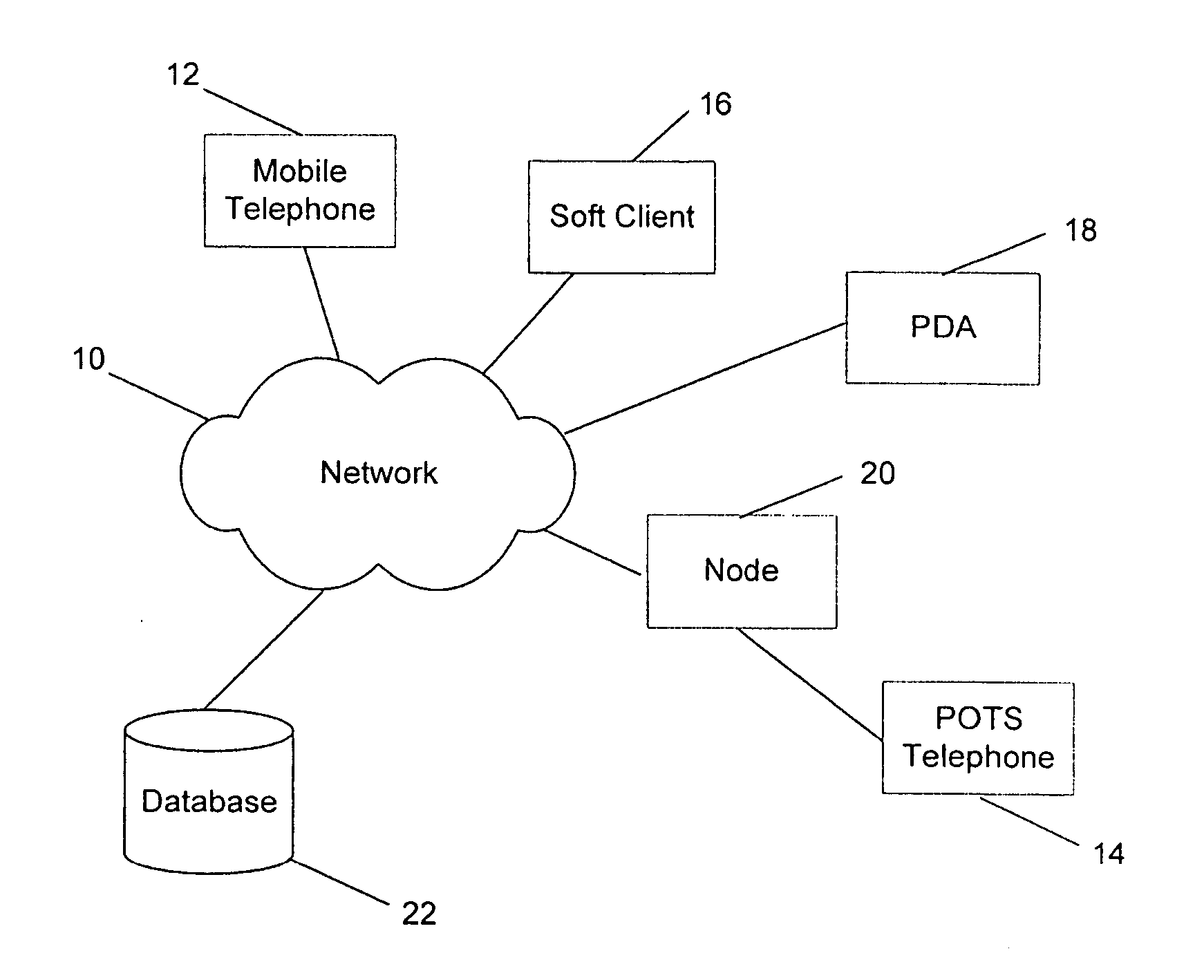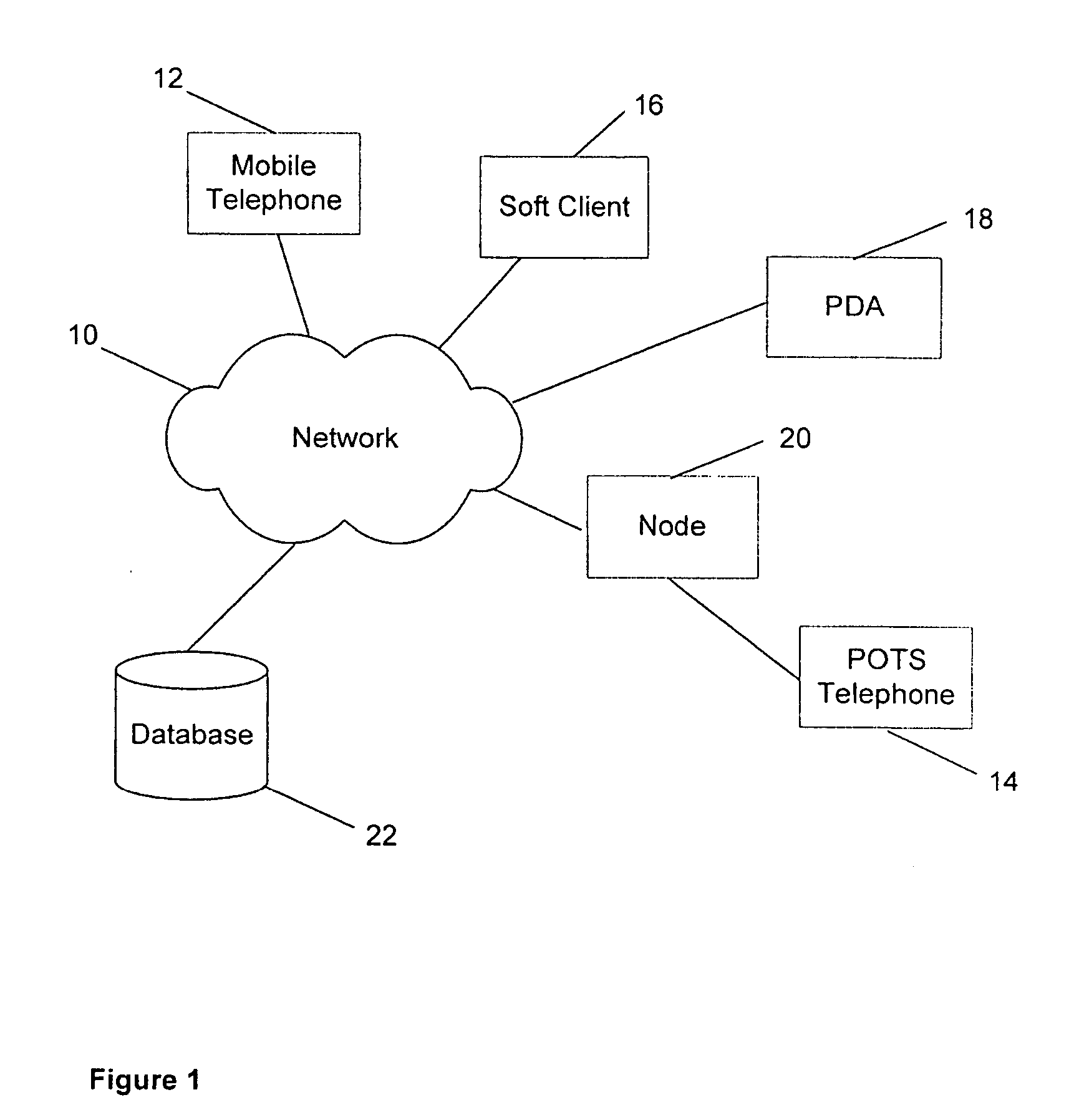Preventing connections from calling terminals
- Summary
- Abstract
- Description
- Claims
- Application Information
AI Technical Summary
Benefits of technology
Problems solved by technology
Method used
Image
Examples
Embodiment Construction
[0016]FIG. 1 shows a network 10 having a number of terminals including, for example, a mobile terminal 12, POTS terminal 14, a soft client, such as a personal computer, 16 and a PDA 18. The terminals may be calling terminals if they are requesting a connection with another terminal. Alternatively, if the terminal is receiving the call connection request then it is a receiving terminal.
[0017] The network 10 also has a node 20 that is responsible for routing calls to the terminals. There may be more than one node present in the network 10 and not all terminals in the network 10 are necessarily connected to the same nodes 20. The node 20 may be a telephone exchange server. Alternatively it may be located within the telephone operator's central office or exchange. It may also be a routing node present in a data communications network or any other suitable platform.
[0018] Also present in the network 10 is a database 22. The database 22 contains a personalised list of all the identities...
PUM
 Login to View More
Login to View More Abstract
Description
Claims
Application Information
 Login to View More
Login to View More - R&D Engineer
- R&D Manager
- IP Professional
- Industry Leading Data Capabilities
- Powerful AI technology
- Patent DNA Extraction
Browse by: Latest US Patents, China's latest patents, Technical Efficacy Thesaurus, Application Domain, Technology Topic, Popular Technical Reports.
© 2024 PatSnap. All rights reserved.Legal|Privacy policy|Modern Slavery Act Transparency Statement|Sitemap|About US| Contact US: help@patsnap.com










